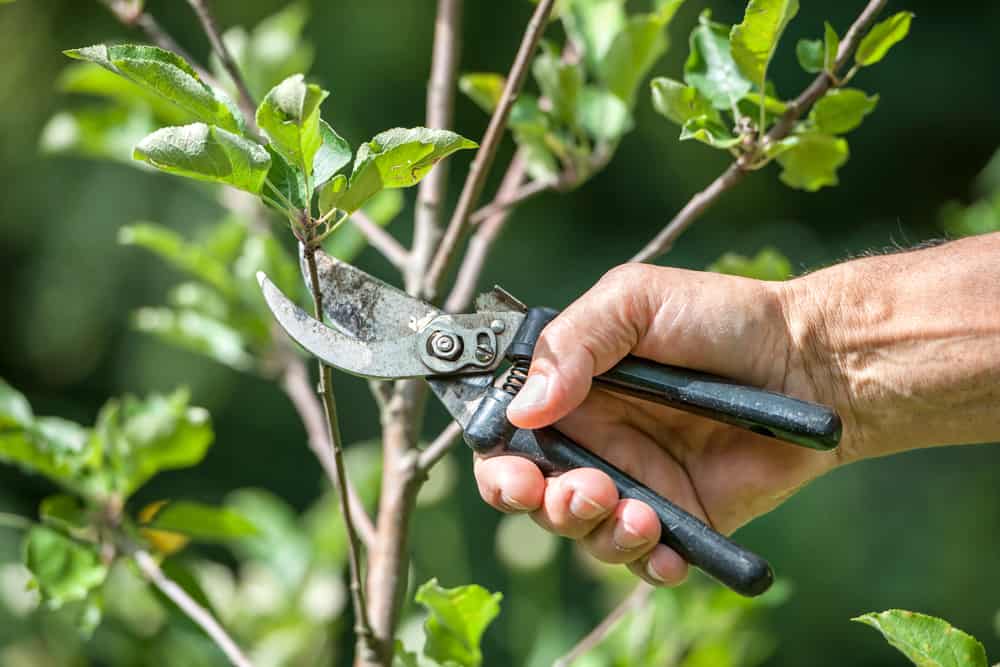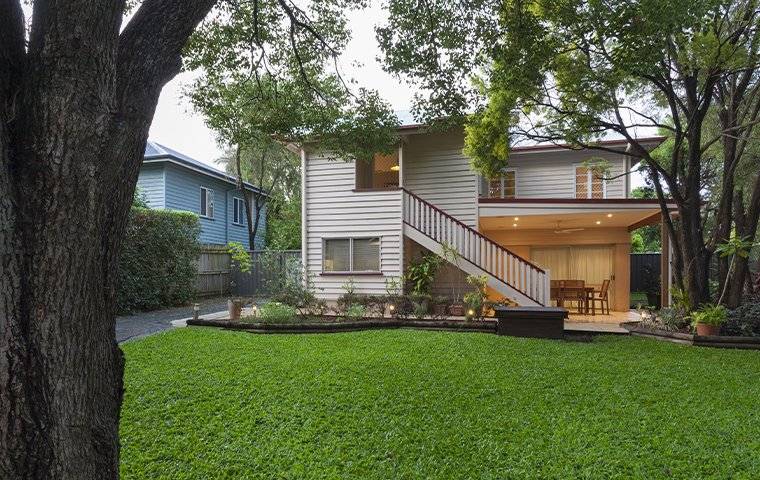
As homeowners and gardeners, it is essential for us to understand that tree care goes beyond just basic planting and watering. Regular tree pruning is a crucial aspect to the health of the tree and ensuring their longevity.
So what exactly is tree pruning? Proper pruning involves selectively removing specific branches or stems from a tree to improve its overall health, structure, and . It may seem like an unnecessary task, but the benefits of regular tree pruning are numerous. Pruning not only promotes healthy growth but also helps prevent diseases, encourages better fruit production, improves air circulation within the canopy, enhances sunlight penetration, and reduces the risk of storm damage.
By investing time in regular tree pruning practices now, you can ensure the long-term health and vitality of your beloved trees while safeguarding your property from potential hazards such as falling branches during storms or high winds. In this article, we will explore in-depth why regular tree pruning is so important and provide helpful tips on when and how to prune your trees effectively. So grab your gardening gloves because we're about to delve into the world of arboriculture!
Benefits of Tree Pruning
Promotes healthy growth: One of the significant advantages of regular tree pruning is that it promotes healthy growth. By removing dead or diseased branches, you create space for new growth to thrive. This not only enhances the overall appearance and vitality of the tree but also encourages the development of strong branches. Proper trimming can improve a tree's structure and balance by reducing excessive weight on certain limbs and redirecting growth where needed.
Enhances aesthetics: Well-maintained trees can significantly enhance the aesthetics of any landscape. Regular pruning allows you to shape your trees according to your preferences, creating a more visually appealing environment. Whether it's achieving a symmetrical crown or maintaining an attractive shape, pruning can help mold your trees into desirable forms that add value and beauty to your outdoor space.
Improves air circulation: Another important benefit of regular tree pruning is improved air circulation through the canopy. Proper spacing between branches allows for better airflow, which reduces diseases caused by stagnant moisture on foliage and minimizes opportunities for pathogens to spread among neighboring plants. Good air circulation helps maintain healthier leaves as well since they are less likely to be susceptible to moisture-related issues like fungal infections.
Reduces risk: Regular inspection and removal of weak or hazardous limbs are crucial in minimizing risks associated with falling branches during storms or high winds. Over time, weak branches may become more prone to failure due to disease, pest infestation, or structural issues. Pruning removes these potential hazards before they pose a threat to property or people below.
By understanding these benefits and taking timely action with regular tree pruning practices, you not only contribute positively towards improving tree health but also ensure greater safety within your surroundings while maximizing visual appeal in your landscape design.
When Should Trees and Shrubs be Pruned?
Pruning trees at the right time is crucial for their health and to maximize the benefits of pruning. While there are variations depending on the specific tree species, here are some general considerations for each season:
Spring: In early spring, when new growth begins, it's an ideal time to prune most trees. This helps shape the tree before leaves fully develop and allows sunlight and air circulation into its branches. However, some flowering trees should be pruned after they have bloomed.
Summer: Summer is generally not recommended for heavy pruning but light maintenance may still be necessary. Remove any dead or damaged branches that pose safety risks or impede visibility around your property. Additionally, trimming back water sprouts or suckers can help redirect energy towards healthier growth.
Fall: Late fall is typically a good time to assess which branches need removal before winter storms arrive. Prune any diseased limbs or those rubbing against structures as they can cause significant damage during strong winds or snowfall.
Winter: Dormant winter months provide excellent conditions for tree pruning as fewer insects and diseases are active during this period. It's best to wait until late winter when all frost risk has passed but before spring bud development starts.
Signs indicating immediate need for pruning
While seasonal guidelines provide a helpful framework, certain signs indicate that immediate pruning may be required regardless of the time of year. Look out for deadwood – dry and brittle branches that can break off easily in wind gusts - as well as crossed or crowded limbs that could cause structural failure under pressure from ice build-up or high winds.
Pruning Techniques
To properly prune trees, there are a few basic tools you will need. The most essential tool is a pair of sharp pruning shears or secateurs. These will be used for cutting smaller branches and twigs. For thicker branches, you will need a set of loppers, which have longer handles and can provide more leverage for cutting. For larger limbs that require heavier cutting, use a pruning saw or an electric chainsaw.
It's also important to have safety equipment such as gloves and goggles to protect yourself from any potential accidents. If you're working with tall trees or hard-to-reach areas, consider investing in a sturdy ladder or hiring professional tree climbers who are experienced in this type of work.
Techniques:
When it comes to the actual pruning cuts, there are different types of cuts that serve specific purposes:
1. Thinning Cut: This type of cut involves removing an entire branch back to the main stem or a lateral branch. Thinning cuts help improve airflow and light penetration within the tree canopy, reducing disease risk and promoting overall growth.
2. Heading Cut: A heading cut involves shortening a branch by cutting it just above a bud or lateral branch. It stimulates new growth at the site of the cut, making it useful for shaping hedges or maintaining size in ornamental shrubs.
3. Rejuvenation Cut: As the name suggests, rejuvenation cuts are more severe pruning techniques used to renew overgrown or neglected plants. They involve cutting all stems close to ground level, encouraging fresh growth from dormant buds near the base of the plant.
4. Shearing Cut: This is commonly employed in formal hedges and topiaries where precise shapes are desired. A shearing cut uses pruning tools like hedge trimmers or shears to create straight and even edges across a mass of foliage.
Reasons for Pruning Trees
Regular tree pruning is crucial for maintaining the health, safety, and aesthetics of trees. Throughout this article, we have explored the benefits of tree pruning and provided tips on when and how to prune trees. By periodically removing dead or diseased branches, we can prevent further damage to the tree and promote healthy growth. Pruning also allows more sunlight to reach the inner branches, improving air circulation and reducing the risk of fungal diseases.
In addition to health benefits, regular pruning helps enhance the overall aesthetics of trees. By shaping and thinning out branches, we can create a more visually appealing structure that complements its surroundings. Properly pruned trees also improve property value by adding curb appeal.
Remember that timing is key when it comes to tree pruning – most deciduous trees are best pruned during their dormant season in late winter or early spring before new growth emerges. On the other hand, summer-flowering shrubs are often pruned in early spring before buds form.
Whether you're a homeowner looking to maintain your backyard oasis or an arborist responsible for managing public green spaces, regularly including tree pruning in your maintenance routine will ensure healthier and safer trees for years to come. So grab those gardening shears (or hire a professional) and give your beloved trees some well-deserved attention – they will thank you with abundant beauty for generations to come.



